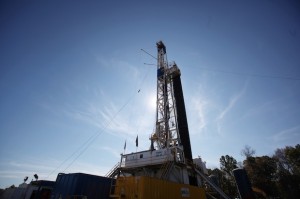Injection Well Earthquakes Worth Worrying About, Stanford Geophysicist Says
-
Joe Wertz
Ohio is one of the half-dozen states — like Oklahoma — where earthquakes have been linked to disposal and injection wells used by the oil and gas industry.
And while Ohio and Oklahoma — and other states like Arkansas, Texas and Colorado — aren’t usually associated with earthquake activity, injection and disposal well activity routinely produces “micro-seismic events,” Mark Zoback, a geophysicist and Stanford University professor said Tuesday at a conference on natural gas development in Ohio’s Utica shale.
The Cleveland Plain Dealer’s Alison Grant reported on Zoback’s remarks.
“So is it something to worry about?” Zoback said to an audience of engineers, scientists, students and community activists gathered at Severance Hall for the conference on opportunities and challenges presented by shale gas for our region. “The answer is yes.”
It’s important to note, Zoback said, that miniature earthquakes occur anyway, nearly everywhere there are fault zones in the earth’s tectonic plates. What pushing fluids underground can do is hasten what would have happened 1,000 years, 10,000 years or more in the future, he said.
Zoback is an expert on “induced seismicity” and has written papers on the subject, which describes earthquakes triggered by human activity. He’s also a proponent of fracking, increased domestic drilling and U.S. energy independence, the Plain Dealer reports:
But he said scientists and drillers need to get better at predicting and managing seismic activity triggered by shale gas development.
The 5.7-magnitude quake that shook near Prague, Oklahoma in November 2011 is the largest earthquake linked to disposal and injection wells, but Oklahoma’s regulatory response has been almost nonexistent.
Almost every other state with possible injection well-triggered quakes — with the exception of Texas — has taken more forceful steps to prevent them from happening again.
Ohio’s response has been among the toughest. In response to the 4.0-magnitude earthquake that shook near Youngstown, Ohio in December 2011 and January 2012, officials there banned disposal wells in areas that have a higher earthquake risk. Regulators in Ohio also review faults and seismic risk before issuing disposal well permits and require operators to install electronic sensors to better record and track much-needed well data.

